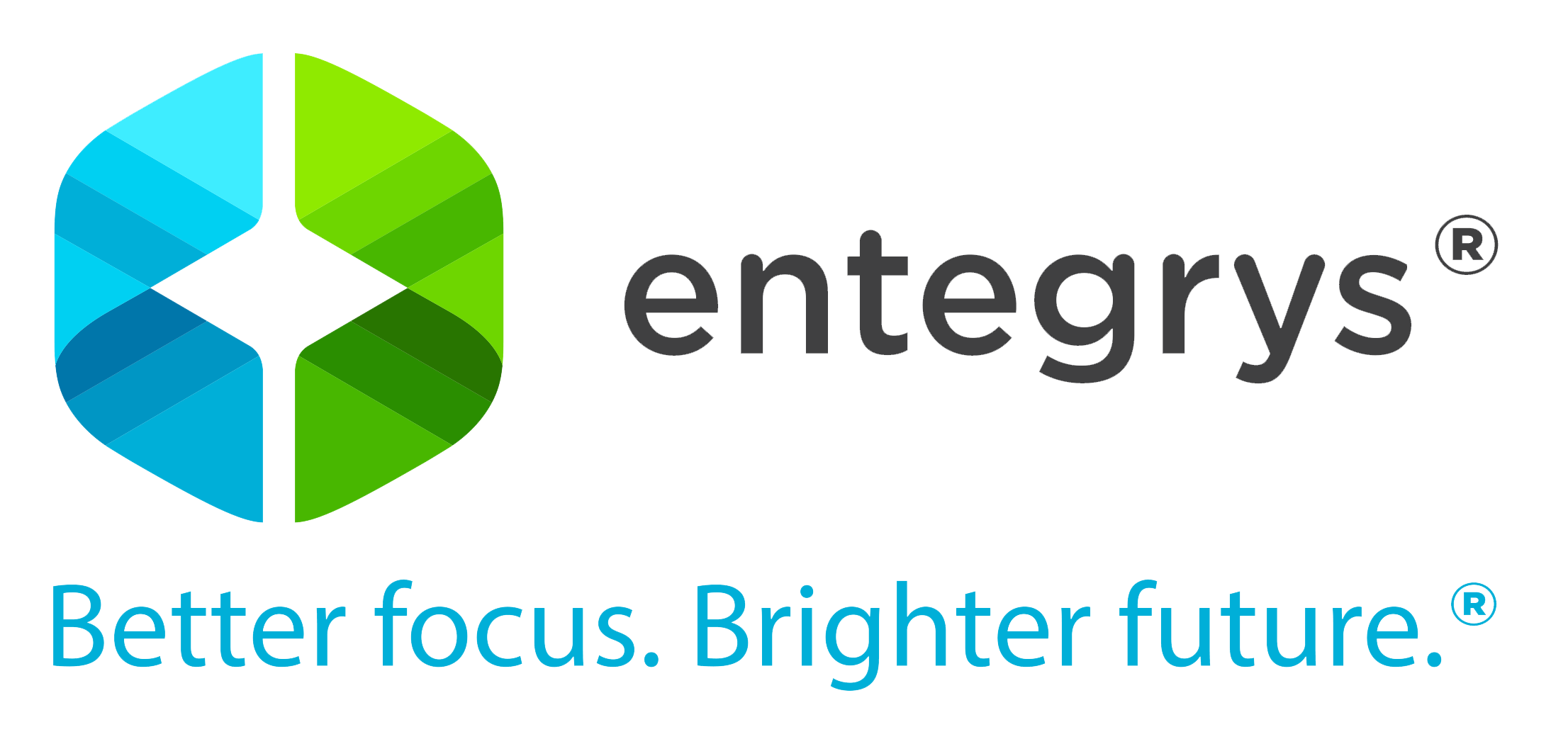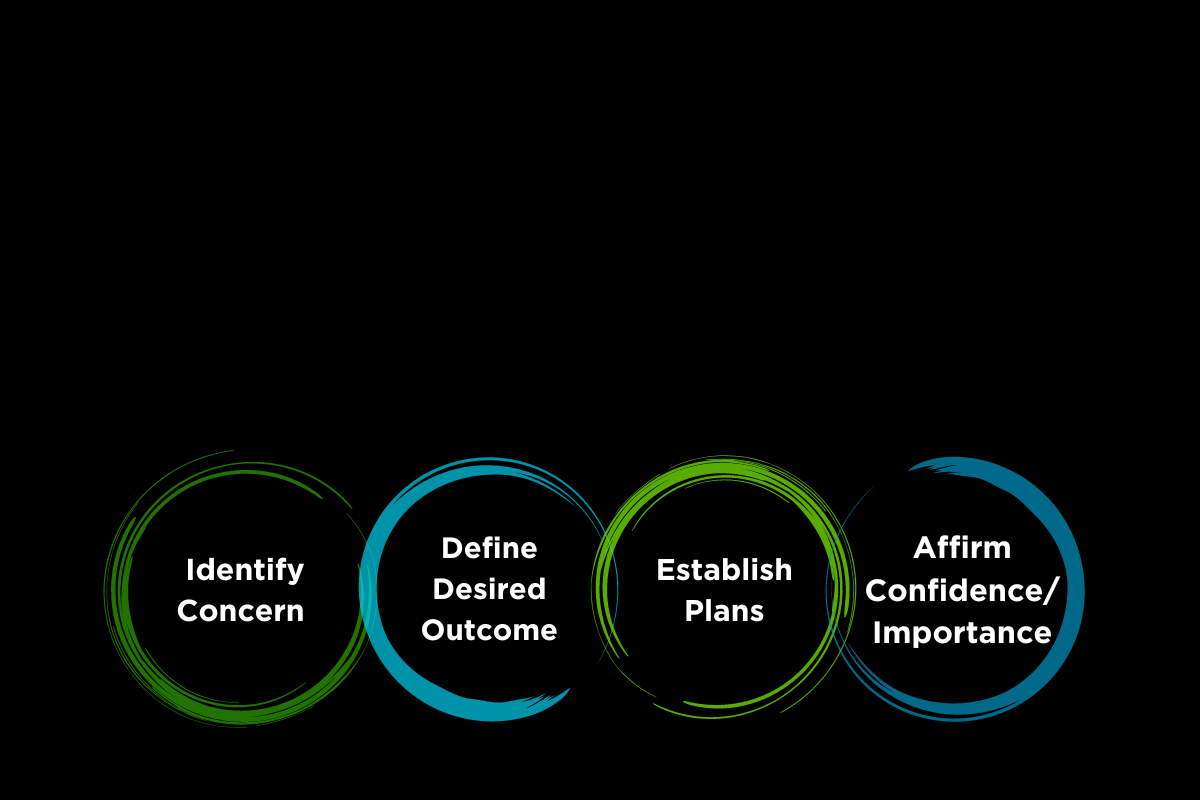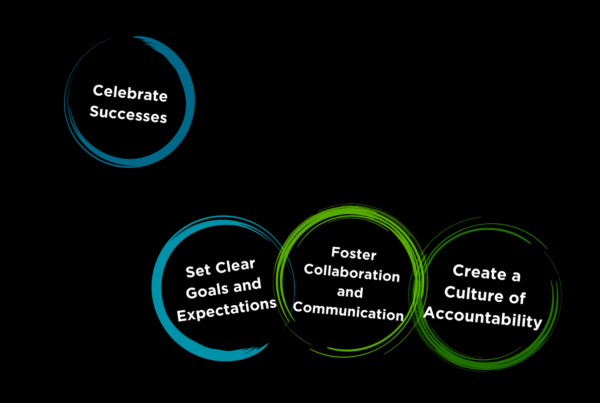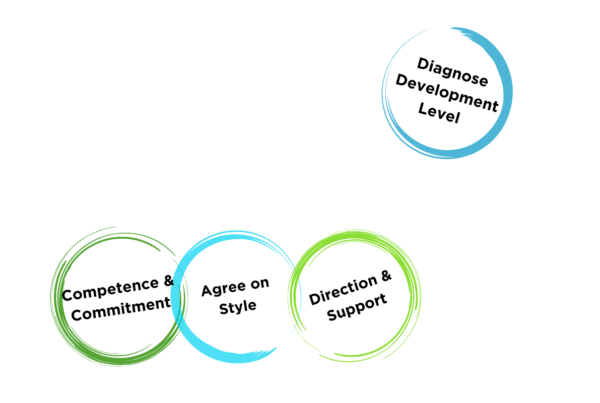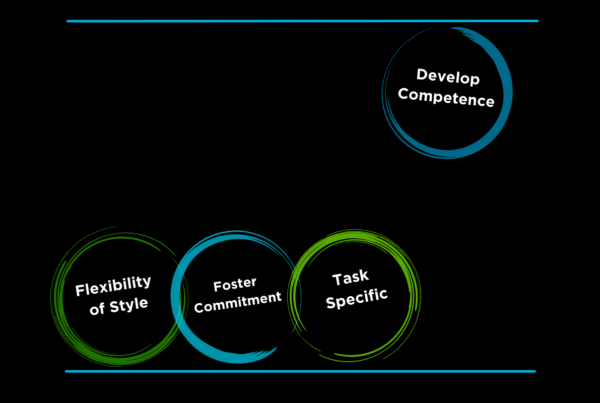Series Overview
In Part 1 of our situational leadership series, we introduced the concept and revealed that it is not about leading staff toward a vision, but rather about developing their performance.
In Part 2, we explored the building blocks of situational leadership, i.e.:
- Situational leadership is built around the competence and behaviours of two primary groups—leaders and followers. We will refer to followers as individuals.
- The concept proposes that individuals progress through four development levels or stages as they master a particular task or situation.
- There are two factors that determine an individual’s development level in that task, i.e. their competence in performing the task and their commitment or confidence to perform the task without supervision.
- Ideally, leaders will respond with one of four leadership styles to match the development level of the individual.
- Each style is comprised of the appropriate degree of direction to build the individual’s competence in that task, and support to build their commitment.
An informal perspective
The following is an informal picture of the relationship between development level and style.
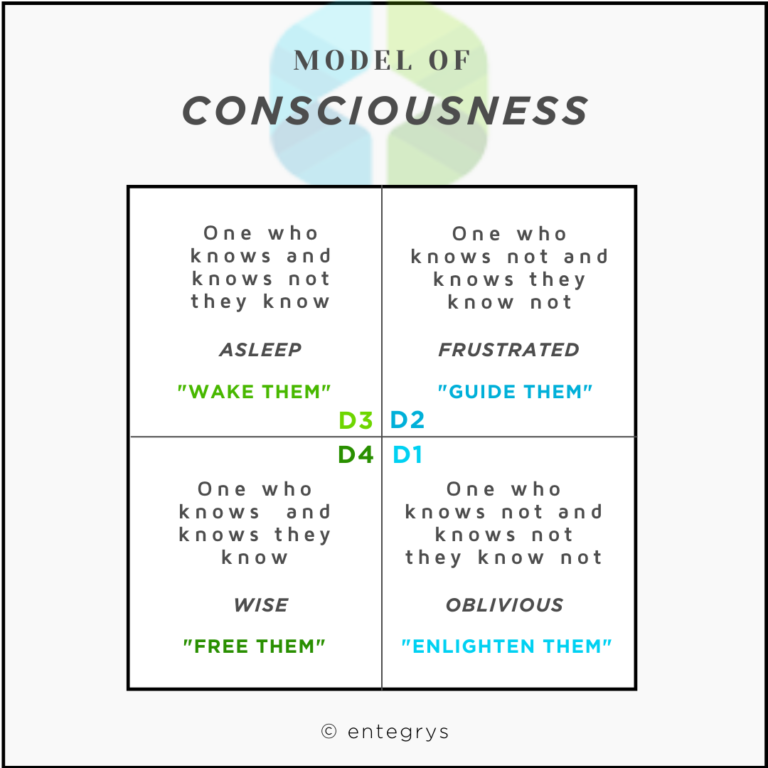
So here we are with a great model for developing staff—possibly the best available!
Why might it be the best?
- The concept is logical. Development level and leadership style can usually be identified quickly.
- It’s collaborative and respectful—something you do with staff, not to
- It enables staff to reach technical and professional performance requirements faster.
- It helps leaders avoid or mitigate most of the rough patches in supervision.
But make no mistake. Even with such an effective model to follow, performance management and development can be challenging. Here are tips on how this model can help you navigate the challenges.
Navigating the speed bumps
Speed bump # 1 – Failure to recognize the real task
Imagine you ask a senior operator to train a new employee on the forklift. Being so skilled, you assume this will be no problem and leave the two on their own. After three days, the new employee can still not operate the forklift. The senior operator is frustrated and anxious. Both feel like a complete failure.
What’s the problem? You did not identify the real task. You chose a senior operator because she was a highly competent—D4—forklift operator. But the task was training, not operating. The senior operator had difficulty communicating and was uncomfortable in the spotlight, i.e. a D1 in the training role. To succeed, she needed an S1 style from you—high direction and support.
Navigating failure to recognize the task
First, be clear on what the primary task is in any new situation. Ask yourself this key question— “What is the task?” And know that sometimes the real task is learning to work together as leader and follower with different personalities and approaches.
Secondly, remember that an individual can be at different development levels in different tasks or situations—an expert in one, and a novice in another. This is the very heart of situational leadership.
It is important to understand that situational leadership uses the term development level in reference to an individuals’ master
The appropriate leadership style is dependent on the specific task or situation, not the individual. This is the very essence of situational leadership.
Speed bump # 2 – Misdiagnosis of the employee’s development level
Some years ago, I hired an individual for a special project. Based on the resume and interview, I was convinced they were at development level 3 in this task area. Shortly after, I was shocked to discover they were barely at level 2.
How did this happen? Even as an experienced situational leader, I mistook enthusiastic confidence for competence. The candidate provided a detailed description of the results of a similar project they just completed with their manager. The deliverables were so impressive that I ignored the regular use of ‘we versus I’ language. I neglected to identify what part they played in producing the deliverables. Their role was to assist the manager. They had not yet learned to perform the task independently. I learned a valuable lesson from that hire. Sometimes you just get it wrong.
Navigating misdiagnosis
You can decrease the chances of misdiagnosing development level by asking two simple questions.
– Has the individual mastered the task, i.e. can they do it?
– Are they confident and committed to doing it well without supervision, i.e. will they do it?
The following model will point you to the right development level based on the answers to these two questions.
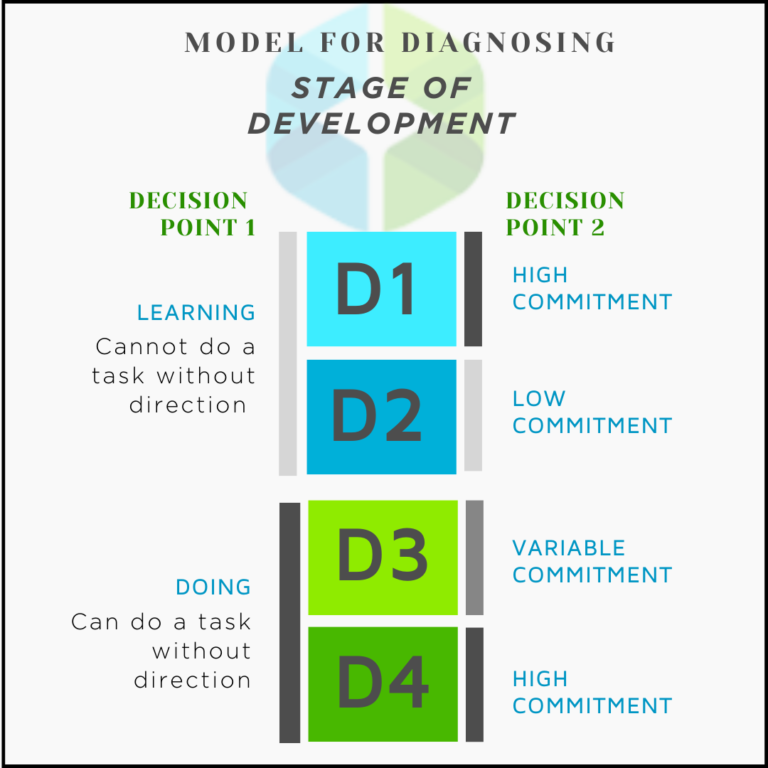
When you do find yourself in a situation where you have misdiagnosed, use this tool to determine the actual development level in that task and switch to the matching leadership style.
Speed bump # 3 – Regression—It takes two to tango.
Potential triggers for regression
Performance regression can result from a decline in either competence (ability) or commitment (motivation).
A decline in competence is most often triggered by deterioration in the individual’s cognitive capacity or their physical, mental, or emotional health. However, it could also be triggered by a change in organizational factors like operational procedures, equipment, technology, or environmental conditions.
The most common trigger of a decline in commitment is stress—personal, interpersonal, or work. On occasion, it can simply be loss of interest.
Regression example – Sometimes there is no elegant solution.
After an extensive interview process, including a rigorous simulation exercise, the company hired a facilitator to conduct awareness workshops in an organizationally sensitive area. This was a challenging assignment.
The initial sessions proceeded as hoped with satisfactory feedback from participants. Then a discussion arose in one workshop on a matter in which the facilitator was personally vested. The facilitator was unable to maintain objectivity and the situation became volatile. Word travels fast in an organization, so not surprisingly, this topic was raised again in future workshops. The facilitator’s effectiveness continued to deteriorate. If you were the manager, how would you address the situation?
Navigating regression
Fortunately, situational leadership can help navigate even these waters. So, if you find yourself in a challenging situation like the one in this example, here are some steps to help you determine an appropriate course of action.
- It is critical to determine the source of the decline before deciding how to respond.
– Take time to observe the individual at work and gather feedback from others.
– Use the questions for diagnosing the stage of development to help you interpret your observations and feedback. Can they still perform the task? Are they motivated to do so? - If the decline in competence is triggered by:
– the individual’s health, connect them with appropriate resources to aid in their recovery.
– organizational factors, analyze the issue and resolve it if you can. If not, provide support and resources to help the individual deal with the changes and recover performance. - If the decline in commitment is triggered by:
– personal stress – refer them to appropriate resources to aid in their recovery.
– interpersonal workplace stress – provide support or resources to help the individuals resolve the issue.
– work stress – analyze the issue and resolve it if you can. If not, provide support and resources to help the individual recover performance. - If the decline in commitment is triggered by loss of interest or motivation, discuss the situation and provide support to help the individual recover performance.
Each of the action steps above will likely involve a discussion with the individual. The next section will help guide you through that discussion.
The regression discussion
“Daring leaders who live into their values are never silent about hard things.”
Brené Brown
Important considerations for the discussion:
- It will require managerial courage and integrity to speak the truth to the individual.
- Always begin in leadership style S3. This will help you identify the source of the decline and encourage the individual to take charge of their performance recovery.
- Most often, performance is recovered through a S3 discussion. If it is not, the leader moves backward on the leadership scale to S2 and even S1 if required.
- This backward movement can take place in multiple discussions over a period of days, weeks or months. However, depending on the severity of the situation and the commitment level of the individual, the discussion might move through styles 3, 2 and 1 in mere minutes.
The following graphic outlines the pattern of the discussion and decision-making process as you move through the styles.
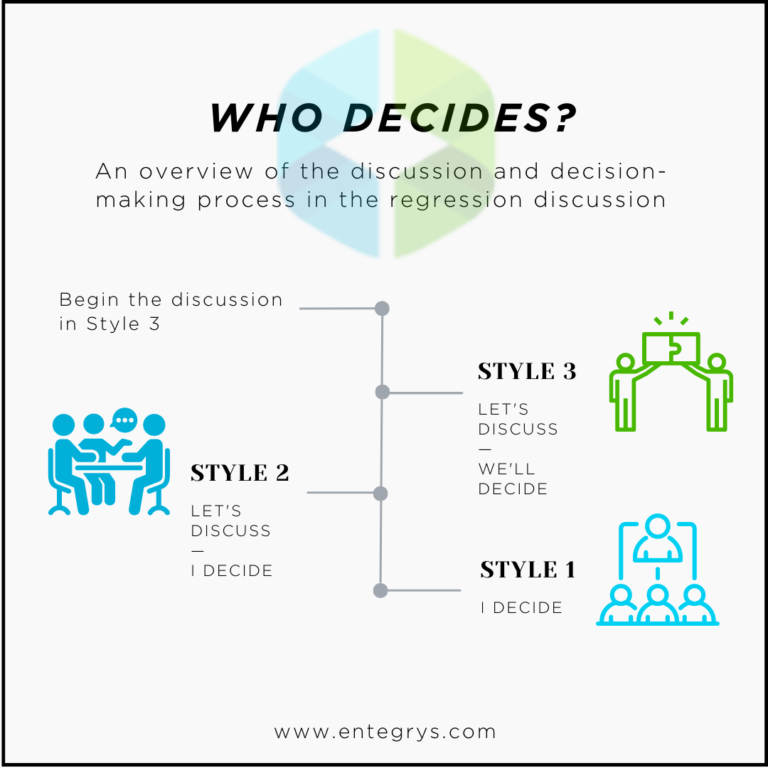
- If performance recovery is not achieved, a regression discussion may be the start of a progressive disciplinary process or even dismissal. So it is important to document the discussion if you need to revert to S2 and S1.
Discussion steps:
The IDEEA model depicted in this graphic will help you remember the essential steps to include in any regression discussion. How formal each step is will vary with the severity and cause of the regression.
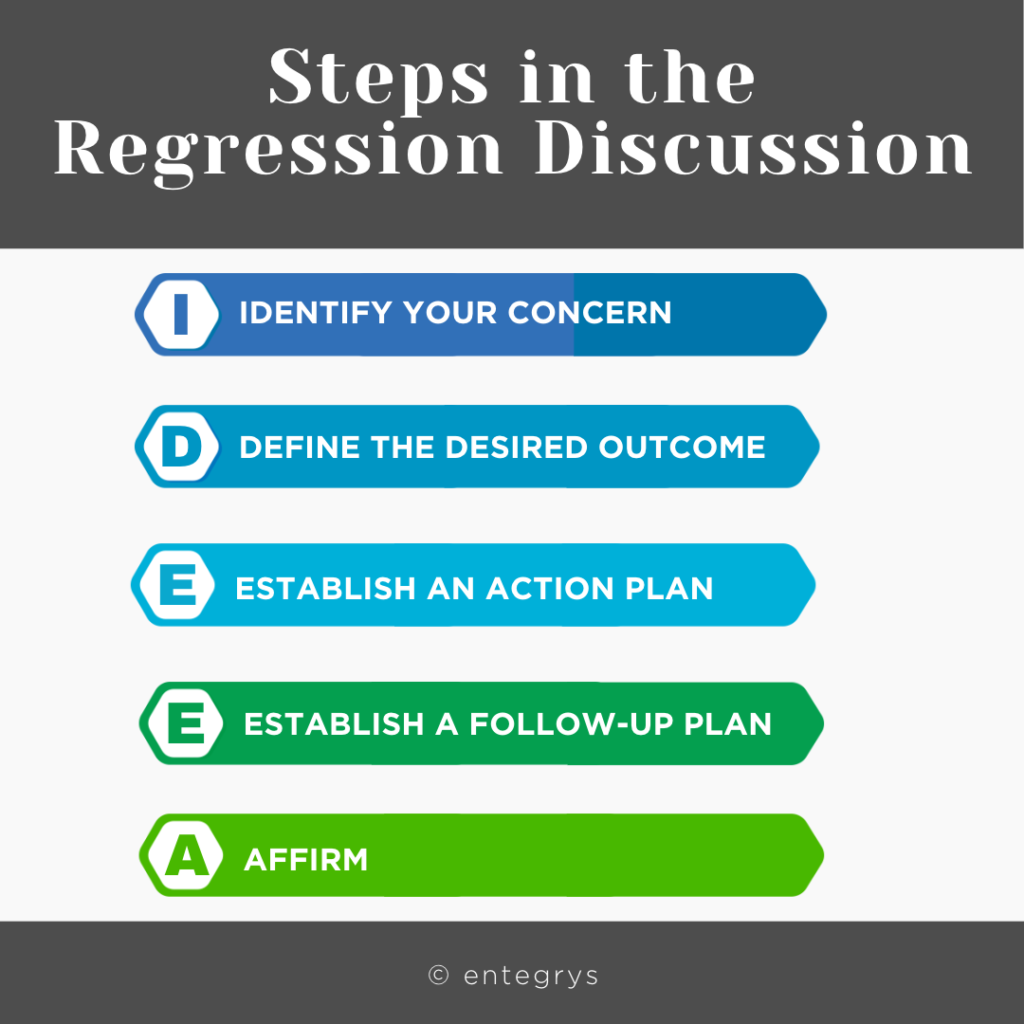
I Identify your concern
Clarify and confirm what’s happening.
D Define the desired outcome
Use S.M.A.R.T. goals to describe it concretely.
E Establish an action plan
Explore ideas to plan how the outcome will be achieved.
E Establish a follow-up plan
When and how will follow-up occur? Ensure the individual’s commitment/agreement to the plan.
A Affirm
Affirm the individual, the importance of follow through, and, in S2 and 1, the consequences if performance recovery is not achieved.
Thankfully, if you have been using the situational leadership approach consistently in the development process, regression will be a rare occurrence. But when it does happen, let’s dare to be leaders who make a difference by having the difficult conversations that drive positive change and performance development!
If you found these articles helpful, be sure to join us for Part 4. In it, we will connect the dots to demonstrate how competency assessment tools, like the Entegrys Focus assessment report, can help you identify your concerns and find the right words to express them.
